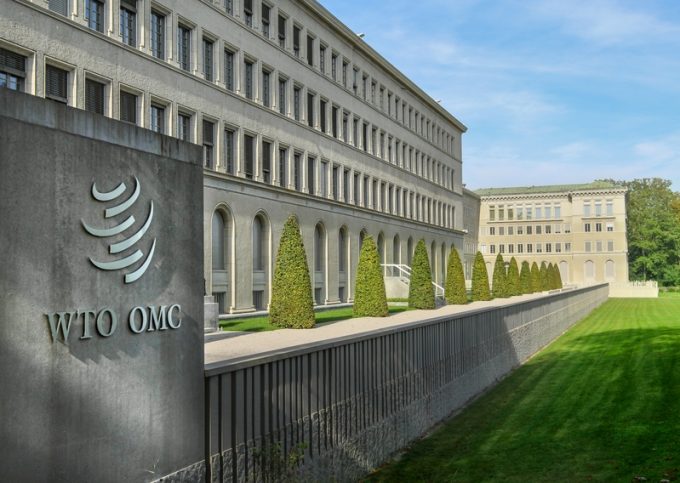'Challenging' Q3 for DFDS – and weaker demand expected to continue
Danish ferry and road freight operator DFDS saw weaker road freight demand across Europe in ...
GXO: NEW PARTNERSHIPKNIN: MATCHING PREVIOUS LOWSEXPD: VALUE AND LEGAL RISKMAERSK: DOWN SHE GOESVW: PAY CUTFDX: INSIDER BUYXOM: THE PAIN IS FELTUPS: CLOSING DEALSGXO: LOOKING FOR VALUEXOM: LNG PARTNERSHIPXPO: UNDER PRESSUREDSV: GAUGING UPSIDEAAPL: 'NOT ENOUGH'AAPL: SMART RACELINE: NEW LOW AMZN: NEW INVESTMENT
GXO: NEW PARTNERSHIPKNIN: MATCHING PREVIOUS LOWSEXPD: VALUE AND LEGAL RISKMAERSK: DOWN SHE GOESVW: PAY CUTFDX: INSIDER BUYXOM: THE PAIN IS FELTUPS: CLOSING DEALSGXO: LOOKING FOR VALUEXOM: LNG PARTNERSHIPXPO: UNDER PRESSUREDSV: GAUGING UPSIDEAAPL: 'NOT ENOUGH'AAPL: SMART RACELINE: NEW LOW AMZN: NEW INVESTMENT

The UK and the EU are entering into a key phase of negotiations in terms of their future trading relationship and, as things stand, it is quite possible that no agreement will be reached on a free trade agreement (FTA), which would mean a hard Brexit with trade between the UK and the EU being conducted on WTO terms.
One of the outcomes of a hard Brexit will be that many goods imported from or exported to the EU will be subject to tariffs for the first time since the establishment of the single market and customs union.
Affected businesses will need to calculate the cost of these tariffs and other non-tariff barrier costs, assess whether these cost can be passed on to the end consumer or the next in line in the supply chain, determine whether the business is still viable with these new additional costs and, if so, whether it has adequate working capital facilities to meet these new costs.
It will also be important to determine whether any products or parts will be subject to Tariff Rate Quotas (TRQs). TRQs allow a lower rate tariff on imports of a given product up to a specific quantity and requires a higher rate on imports exceeding that quantity. These TRQs are frequently seen in FTAs but are also relevant under the WTO rules.
When entering an FTA, the parties to that FTA agree to provide preferential trading terms to goods and services traded between those two countries/trading blocs. Rules of origin have evolved to attribute a country of origin to a product to determine its nationality.
For example, the EU does not currently have a full FTA with the USA but if the UK were to enter into a FTA with both the EU and the USA, the EU would want to ensure that the US does not circumvent EU tariffs on US goods by shipping goods to the UK tariff free for forwarding onto the EU. Rules of origin provisions are also relevant for TRQ purposes.
Pre-Brexit, the relevant nationality for UK goods was the EU. Post-Brexit, the nationality will be the UK. For many sectors this will not be an issue but, for some, this will be highly problematic.
Certain goods such as cars and aircraft are made up of many parts and components. Take a car manufactured in the UK – the engine may be built in the UK but the engine blocks come from France and the transmission system from Germany and various other parts from Spain, Italy, France, Germany and the UK.
The same also is true in aviation – the UK aviation sector is largely made up of the manufacture and exporting of components such as wings, landing systems, engines and avionic systems.
Pre-Brexit, if the relevant car or aircraft was predominately built within the EU with a largely EU supply chain, then certifying the EU nationality was relatively straightforward. Post-Brexit, absent an agreement with the EU, it will become more complicated for both the EU and the UK. Take the case of a car where 55% of its value comes from its pan-EU (non-UK) production with 30% of its value coming from the UK. If the EU has an FTA which provides preferential treatment to cars with 65% EU content, pre-Brexit, this would not be an issue but post-Brexit it would be for both the UK and EU entities involved.
There are ways of addressing these issues at governmental level by way of agreeing full or bilateral and diagonal cumulation provisions, but these would effectively require agreement of an FTA with EU.
Absent such arrangements being agreed, it may be necessary for supply chains to be revisited. In the above scenario, it may well be that EU manufacturers would seek to source the UK components from elsewhere within the EU to preserve EU nationality with a detrimental impact upon those UK manufacturers in the supply chain.
Conversely, where products are largely UK in origin, there could be opportunities for UK manufacturers where there is a need to increase the UK contribution to the product to ensure UK nationality.
Ascertaining the origin of UK goods will be an additional new cost for many UK companies. Anecdotally, many businesses have indicated that they would prefer to take the tariff rate hit than incur the cost, time and administrative inconvenience of proving the origin of their particular goods.
Clearly, this decision would have to be made on a goods by goods basis depending on the tariff rate for the relevant good and the complexity of the relevant supply chain but this determination will need to be built into the strategic planning of those businesses that could be affected by these provisions.
This is a guest post by Robert Lyons, a specialist business and corporate lawyer at Excello Law
Comment on this article